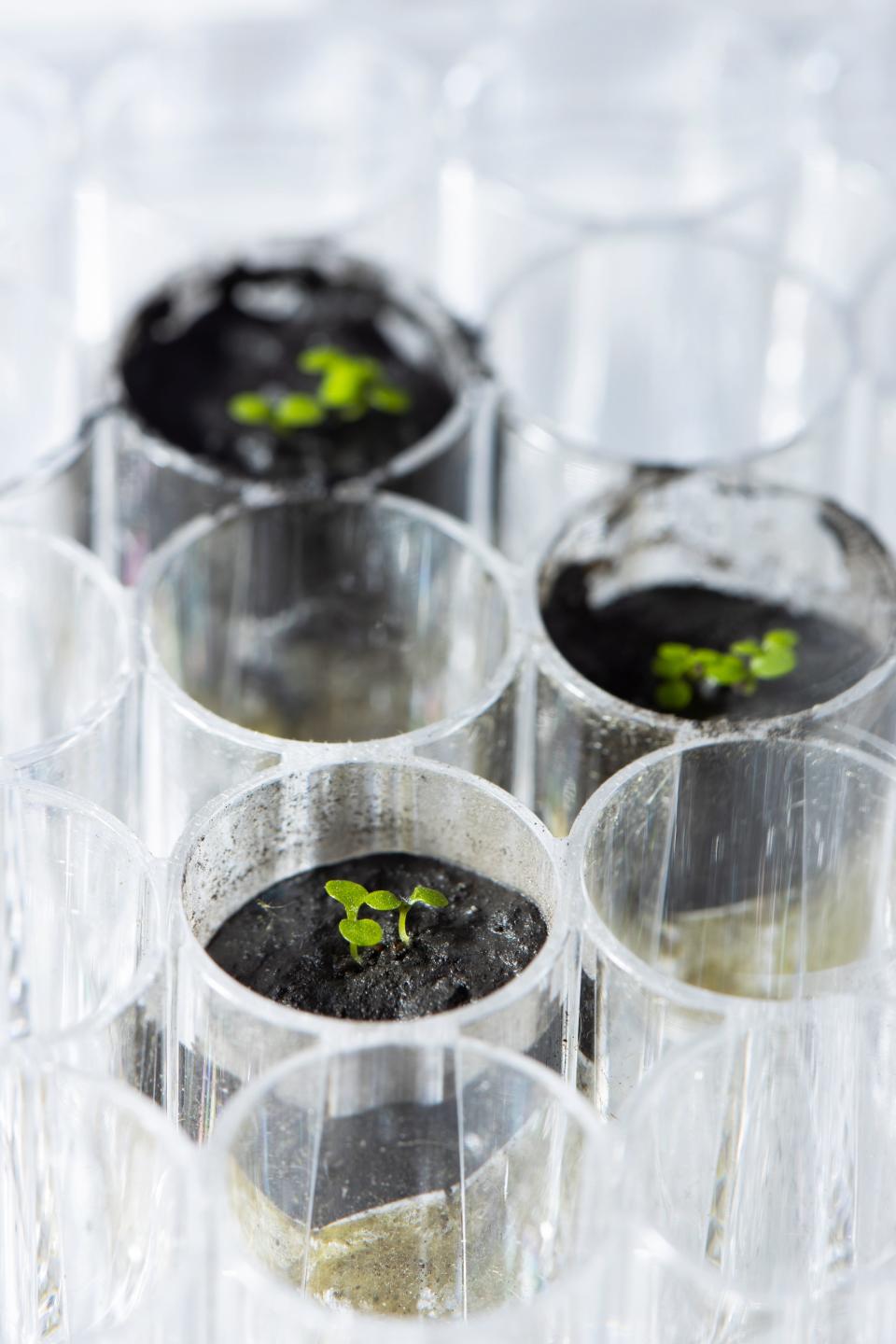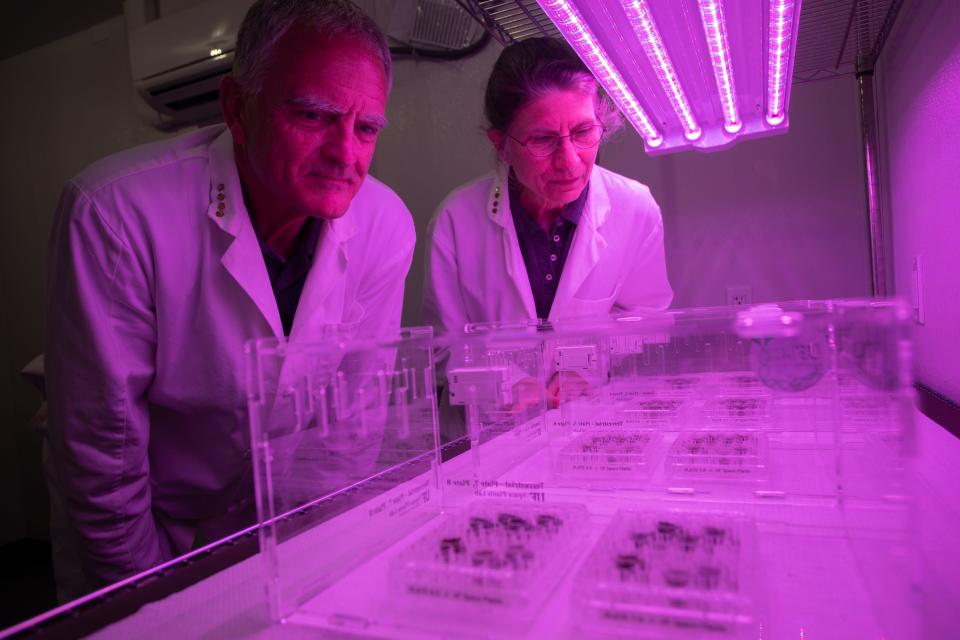Scientists grew plants in moon soil for first time ever. Here's why it's 'astounding.'
Researchers grew plants in soil — from the moon — for the first time ever, according to a new study.
Scientists from the University of Florida showed that plants can grow in lunar soil, according to a peer-reviewed study published this week in the journal Communications Biology.
The researchers used the moon's soil, also called lunar regolith, to conduct the experiment. They had 12 grams of soil, the equivalent of a few teaspoons, collected during the Apollo 11, 12 and 17 missions. The material was loaned to the researchers by NASA.
“Here’s the key finding – plants grow in lunar dirt," Rob Ferl, an assistant vice president for research at the University of Florida and one of the co-authors of the study, told USA TODAY. "That’s just pretty freaking astounding because plants have never been to the moon. Seeds have never adjusted to living up there. There’s no evolutionary reason for us in our hubris to think that plants could grow on lunar soil.”

Space: 'Super flower blood moon' lunar eclipse is coming Sunday night. Here's what you need to know.
Nation: NASA releases stunning images from James Webb Space Telescope in final stage of testing
Although the research shows plants can grow in lunar soil, “they don’t like it," said Anna-Lisa Paul, director of the Interdisciplinary Center for Biotechnology Research at the University of Florida and another co-author.
“They adjust their metabolisms in order to. Even though they don't like growing in lunar regolith, they adjust themselves to enable themselves to grow,” she told USA TODAY. “They pull all manner of tools out of their metabolic toolbox.”
In the seeds planted as controls, the “roots grew nice and long and straight, and the plants were very robust. The roots from the ones growing in the lunar regolith were not. They were more kinked and distorted,” Paul said.
To plant their “garden,” the researchers used thimble-sized wells, with each of the wells receiving lunar soil. They then “moistened the soil with a nutrient solution and added a few seeds from the Arabidopsis plant,” according to a statement from the University of Florida.
The plant is also known as thale cress, which can produce small white flowers and is native to Eurasia and Africa.
“Arabidopsis is widely used in the plant sciences because its genetic code has been fully mapped. Growing Arabidopsis in the lunar soil allowed the researchers more insight into how the soil affected the plants, down to the level of gene expression,” the statement added.

The plants were also given water and light. Those grown in lunar soil were compared to plants grown in non-lunar soils used as a control group, including those planted in JSC-1A, a substance that can mimic actual lunar soil.
Some of the plants grown in the lunar soil “looked pretty close to what the controls looked like,” Paul said. But she added, “When you look at their molecular biology, their metabolism, you could still see that on the inside all the mechanisms that they were doing to keep themselves looking that healthy were going like gangbusters.”
Stephen Elardo, an assistant professor of geological science at the University of Florida and another co-author of the study, told USA TODAY that “the moon is not a hospitable place to plants.
“The fact that you can just simply add a few of those nutrients and still get the plants to grow, as a geologist, I don’t think I would have expected that,” he said.
Ferl explained that plants have previously been “dusted” with lunar samples to determine if there was "a virus or a microbe that would be transferred from the sample into the plant.”
Looking forward, the authors said additional research could answer questions ranging from how to relieve plants’ stress while growing in lunar soil to how to launch a lunar greenhouse.
But for now, “the simple observation of watching plants grow on lunar soil is by itself pretty astounding,” Ferl said.
This article originally appeared on USA TODAY: Space news: Florida scientists grow plants in soil from the moon

